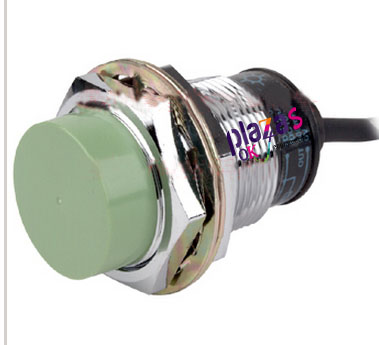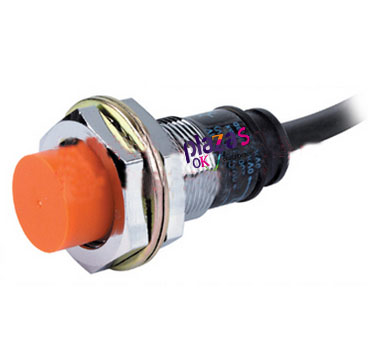Autonics BR4M-TDTL photoelectric switch
Autonics BR4M-TDTL photoelectric switch
Proximity switches are the most commonly used non-contact detection solution. The most commonly used proximity sensor is an inductive type, which uses electromagnetic waves to sense metal objects passing by the sensor's detection surface; in practical applications, this is a very simple application technology for the detection of one to two inches of metal objects. Autonics offers 12 different series of proximity sensors, including inductive and capacitive. Autonics continues to improve product performance and quality, keeping its products at a world-class level. For more than 10 years, the market share of products in South Korea has been maintained.


1. Use self-developed special IC to improve product anti-interference performance
2. Built-in power reverse connection protection circuit (DC3 line type)
3. Built-in surge protection circuit
4. Built-in overcurrent protection circuit (DC type)
5. Long life, high reliability, economical and simple operation proximity switch, AC and DC type, AC proximity switch
6. The working status of the proximity switch can be confirmed through the red LED light
7. IP67 protection level (IEC specification)
8. Wide application, can replace micro switch and limit switch
BR4M-TDTL. Autonics (Autonics) photoelectric switch. "Three Guarantees" range:
The user operates correctly according to the product manual, and the whole machine or important parts cannot be used due to manufacturing quality problems. After confirmation by the company's maintenance technicians, the "three guarantees" service will be carried out. Proximity switch, AC and DC type, AC proximity switch
1. Refund rules: proximity switch, AC and DC type, AC proximity switch
When the user uses the product correctly according to the product manual, a performance failure occurs within 7 days from the date of sale of the product (referring to the product does not meet the safety requirements, there is a danger of endangering personal and property safety, or does not have the required performance, etc.), the customer You can choose to return, exchange or repair. When you return, the payment will be refunded at one time at the selling price. Proximity switch, AC and DC type, AC proximity switch
2. Replacement regulations:
When the user uses the product correctly according to the product manual, within 30 days from the date of sale of the product, a performance failure occurs (referring to the product does not meet the safety requirements, there is a danger of endangering the personal and property safety, or does not have the required performance, etc.), the customer You can choose to exchange or repair, when you exchange, the customer exchanges products of the same model and specifications. Proximity switch, AC and DC type, AC proximity switch
3. Provisions for warranty repair:
When the user uses the product correctly according to the product manual, a performance failure occurs within 1 year from the date of sale of the product (referring to the product does not meet the safety requirements, there is a danger of endangering the personal and property safety, or does not have the required performance, etc.), the customer You can choose the free maintenance service. When repairing, you can repair the product or BR4M-TDTD. Autonics photoelectric switch free of charge.
1. Action distance measurement; when the action piece approaches the sensing surface of the proximity switch from the front, the action distance of the proximity switch is the action distance of the proximity switch, and the measured data should be within the product's parameter range.
2. Measurement of the release distance; when the action piece leaves the sensing surface of the proximity switch from the front and the switch turns from action to release, measure the distance of the action piece from the sensing surface.
3. The measurement of the return difference H; the absolute value of the difference between the action distance and the release distance.
4. Determination of the action frequency; use a speed-adjusting motor to drive the bakelite disc, fix a number of steel plates on the disc, adjust the distance between the switch sensing surface and the action plate, about 80% of the switch action distance, rotate the disc, in turn The action piece is close to the proximity switch, and a speed measuring device is installed on the main shaft of the disc. The output signal of the switch is reshaped and connected to a digital frequency meter. At this time, start the motor and gradually increase the speed. Under the condition that the product of the speed and the action piece is equal to the frequency count, the frequency counter can directly read the switching frequency.
5. Measurement of repeatability accuracy; Fix the action piece on the measuring tool, and control the movement speed of the action zone from the front of the switch sensing surface close to the switch at 0, 1mm/s from the switch action distance beyond 120%. When the switch is activated, read the reading on the measuring tool, and then exit the action area to turn off the switch. Repeat this 10 times, and finally calculate the difference between the value of the 10 measurements and the minimum value and the average value of the 10 times. The larger the difference is the repeat accuracy error.
1. The ambient air temperature is: -5℃~+40℃. The average value within 24 hours does not exceed +35℃;
2. Altitude: not more than 2000m;
3. Atmospheric conditions: The relative humidity of the air does not exceed 50% at +40℃, and it can have a higher relative humidity at a lower temperature.
The average monthly temperature of the wettest month cannot exceed +25℃, and the monthly average relative humidity of the month does not exceed 90%, and the condensation that occurs on the product due to temperature changes should be considered.
A. Installation category: Class III; Pollution degree: Class 3;
B. Installation conditions: the inclination of the installation surface and the vertical surface is not more than ±5°;
C. Shock and vibration: The product should be installed and used in a place where there is no significant shaking, shock and vibration.





